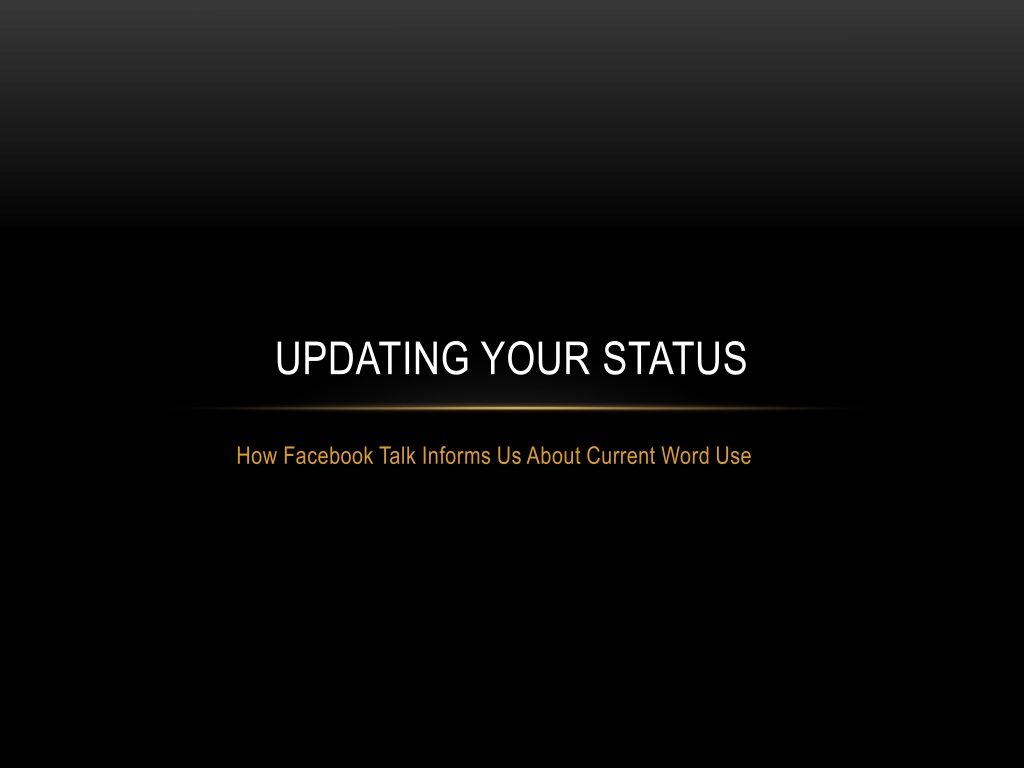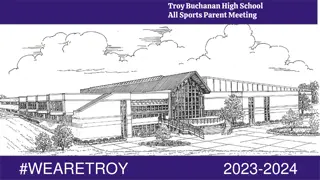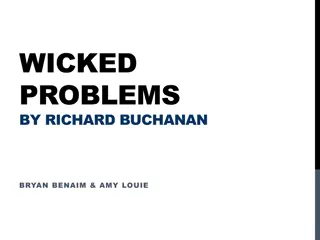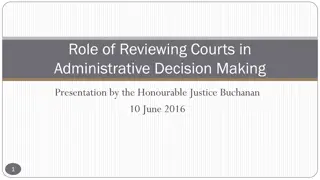
Insights on Word Use Trends from Facebook Talk
Explore how Facebook language has evolved over the years, from the emergence of new terms like "Facebooking" to the influence of social connectedness. Dive into psycholinguistics research and the analysis of word frequency to understand how language shapes our interactions online.
Download Presentation

Please find below an Image/Link to download the presentation.
The content on the website is provided AS IS for your information and personal use only. It may not be sold, licensed, or shared on other websites without obtaining consent from the author. If you encounter any issues during the download, it is possible that the publisher has removed the file from their server.
You are allowed to download the files provided on this website for personal or commercial use, subject to the condition that they are used lawfully. All files are the property of their respective owners.
The content on the website is provided AS IS for your information and personal use only. It may not be sold, licensed, or shared on other websites without obtaining consent from the author.
E N D
Presentation Transcript
UPDATING YOUR STATUS How Facebook Talk Informs Us About Current Word Use
THE FACEBOOK 600 million users Started at Harvard 2004 as a company 2005 bought facebook.com domain
THE FACEBOOK 3rdlargest web company After google.com and amazon.com In March 2010, had more hits than google.com
THE FACEBOOK Word Use Facebooking, Facebook 2008 Unfriend 2009 The Social Network - 2010
THE FACEBOOK The only web program that has more users? Social connectedness
PSYCHOLINGUISTICS Psycholinguistics is a field of psychology that studies all the facets of language and how the interacts with the individual. Dr. B studies word frequency and relationships between words as well how our ability to remember that difference.
PREVIOUS RESEARCH Frequency Simple word counts how often words appear in written text. HAL Hyperspace Analogue to Language (Burgess & Lund, 1997) Brown Corpus (Kucera & Francis, 1967) Google ngrams (Google.com, 2011) Many more .
PREVIOUS RESEARCH Semantics versus Association Semantics = word meaning, the dictionary definition of a word Association = word use, how often words are used together in context Often these are the same thing, but they interact with frequency. What do you think of when I say BANK?
CURRENT STUDY Currently collecting Facebook walls Number of Walls = 771 Donated for PSY 121 credit
CURRENT STUDY Dates of Status Updates 2004 to present Over 2 Gigs of text information
CURRENT STUDY Each Facebook wall is reduced to posts and statuses Then each timestamp is tagged with the status. just loves being at work 3 hours after the store closes. Timestamp: Monday, March 29, 2010 at 1:31am VEGAS BABY!!!!! Timestamp: Monday, February 1, 2010 at 12:47am Flu shot: shot. Hannah Montana band-aid: stuck. Bam. Ready to roll. :) Timestamp: Wednesday, October 27, 2010 at 3:09pm Pshhhhh. Timestamp: Saturday, July 11, 2009 at 12:01pm
CURRENT STUDY Word Use Nearly 50,000-100,000 unique words were collected Frequency was counted over all words Time values to be added later for comparison Only words with information in at least one frequency database are used here. For example, lol omg wtf are all excluded because they were not in the databases for text word frequency.
RESEARCH QUESTIONS How much of social word use overlaps with word use in texts? Comparing to frequency norms from previous psycholinguistic research. How do word frequencies change over time? Will be able to compare to Google ngrams How often do words appear together over time? Will be able to compare to association norms
MOST COMMON WORDS http://www.sporcle.com/games/common_english_words.php
MOST COMMON WORDS Brown Corpus HAL Facebook 1 a the I 2 in to you 3 he of to 4 be and the 5 I a a 6 have in and 7 one is is 8 there that it 9 who you in 10 will for my
RESULTS - OVERLAP 49% Facebook HAL 40% Facebook Brown
RESULTS OVERLAP There appears to only be a 40-50% overlap between our social word use (hey!) and written word use (Hello.) What is the rest? Most common word uses are still similar Pronouns Verbs Determinants Prepositions
RESULTS COMMON USES There are several social implications from the top 100 words: Happy Birthday = 11 and 15 Love = 26 Miss = 34 Hey = 39 Class = 51 Haha = 53
RESULTS SO WHAT? What does this mean for everyday language? Language is always changing and evolving words are deleted and added to the dictionary yearly. Over time languages tend to condense we use less words to emphasize the same meaning.
RESULTS SO WHAT? Social word use is an important phenomenon to understand. Word use is more context (person to person) based and individualized. For instance, you could post on someone s wall I DID IT!! and you would know what they were talking about with no context as to what you did . Written word use is more defined and user-separated. When writing a newspaper article, the journalist has to write so that everyone will understand.
RESULTS SO WHAT? Communication or facts? What exactly is the purpose of all this speak? Are we trying to communicate with people (without having to be in person)? Or share facts and knowledge? Obviously, social connection is key.
RESULTS WHATS NEXT? Put this information into a large database for other researchers to use (www.wordnorms.com). Look at word frequency over time are their reliable relationships that match probability relationships of word pairs? For example, do cat and dog occur together as frequently as we associate them? The probability is much lower than free association (50% versus 11%) Other cool stuff?





